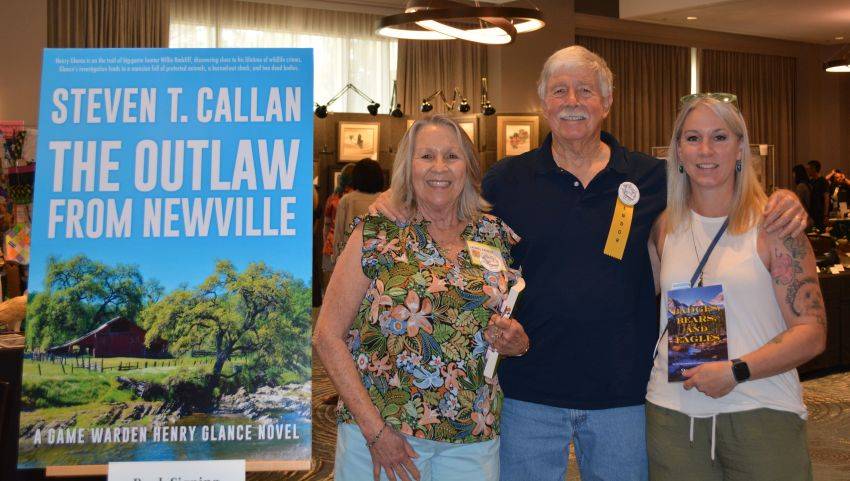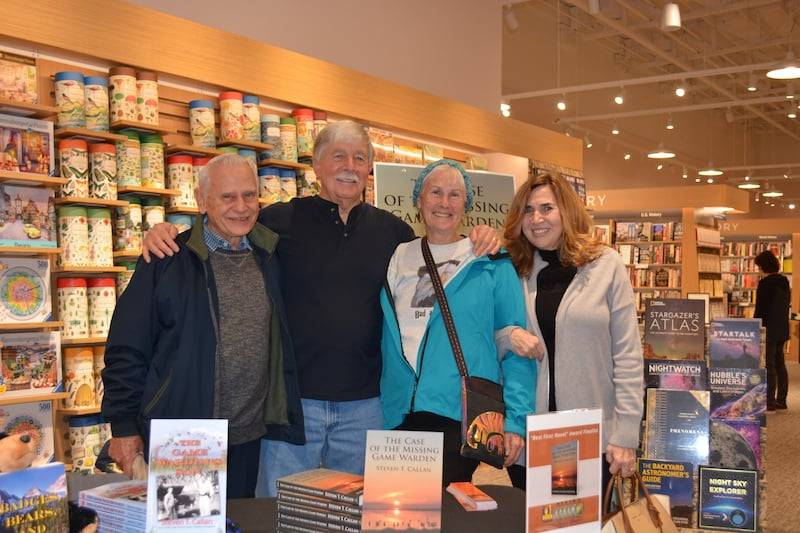
Waterfowl taking flight at Sacramento National Wildlife Refuge (NWR). Photo by author.
With the north wind blowing off snow-covered Mount Shasta, it was brutally cold that December afternoon in 1960. Sitting in the back seat of our family car, I spotted an enormous flock of snow-white birds feeding in the grain field on the west side of the highway.
“Are those geese?” I asked.
“Snows,” said my father. “I see some specks and a few ducks out there with em’. You guys are gonna see a lot of those birds where we’re going.”

Snow geese at Sacramento NWR. Photo by author.
Just then the entire flock exploded into the air, flew directly over our heads, and began circling another field on the opposite side of the highway. My father rolled down his window so my two younger brothers and I could hear the deafening roar of these migratory wonders, all crying out at the same time. It was the sweetest music I had ever heard.
I was twelve years old on that eventful day, traveling up Highway 99W to our new home in Orland, California. Awe-inspired and completely captivated by the incredible beauty of those splendid birds, my passion for waterfowl would last for the rest of my life.
Like many of the boys growing up at the north end of California’s Great Central Valley, I loved to duck hunt and seized every opportunity to bring home a couple of plump, rice-fed mallards for the dinner table. Fifty years later, I still get just as excited when I see wild ducks and geese, but I’ve put away my shotgun and replaced it with a camera and paintbrush.
Don’t get me wrong—I remain a strong advocate for sport hunting, as long as it’s done legally, in accordance with state and federal regulations. As I stated in my first book, Badges, Bears, and Eagles, law-abiding sportsmen contribute hundreds of millions of dollars, every year, toward the purchase of wildlands and the improvement of wildlife habitat. These funds support nongame birds, mammals, fish, reptiles, and beneficial insects, as well as game species like ducks and geese.

Greater white-fronted geese at Sacramento NWR. Photo by author.
Possibly the best place in California to see spectacular concentrations of ducks and geese is the Sacramento National Wildlife Refuge Complex, made up of five national wildlife refuges (NWRs) and three wildlife management areas (WMAs). Our favorite is the Sacramento NWR, located about nine miles south of Willows, off old Highway 99W.
Kathy and I made one of our annual treks down to the refuge a few weeks ago. It was a perfect day for taking photographs: One of our recent storms was breaking up, leaving behind a dazzling blue sky filled with billowing thunderheads.
We began the six-mile auto tour by heading south through a relatively barren section of the refuge. Kathy and I generally don’t see much in this area—maybe a marsh hawk and a pheasant or two. It’s usually when we turn east and travel a half-mile or so that we enter the wetlands. Egrets, herons, ibises, coots, and small concentrations of mallards, shovelers, gadwalls, pintails, and white-fronted geese (specks) frequent this area.

Shoveler pair at Sacramento NWR. Photo by author.
With the sun shining brightly through the parting clouds, we had to remind ourselves to take the majority of our photos from the driver’s side of the car, to avoid shadows and to capture the brilliant colors of these elegant birds. The further east we traveled, the more birds we saw—thousands of snow geese (snows) and smaller flocks of white-fronted geese dominated the wetlands.
“What does that guy think he’s doing?” I said, as we approached the viewing platform at the eastern edge of the auto tour. A middle-aged man, armed with a camera and more gall than Carter has pills, had bypassed a metal gate, walked forty yards beyond a clearly visible “closed area” sign, and was about to disturb a perched bald eagle. My protective instincts were immediately aroused.
After advising the interloper’s friend that his partner was in a closed area, I rolled up the window as Kathy and I prepared for the next leg of the auto tour. “Steve, I’m proud of you for what you did, but you’re not a game warden anymore,” said Kathy, reminding me that I’d been retired for several years.
“I know,” I said, “but if everyone disobeys the rules, the birds will leave or move further away from the road.” No sooner had I uttered those words than the eagle flew away, and the subject of my indignation returned to his car.

Mallard pair at Sacramento NWR. Photo by author.
Heading north, along the eastern boundary of the auto tour route, we began to see a lot more snows and white-fronted geese, along with a few divers: ruddy ducks, buffleheads, and ring-necked ducks. Occasionally, we’d spot mallards and cinnamon teal amongst the tules or sunning themselves on partially submerged logs.
Just before turning northwest, Kathy and I reached a stand of cottonwoods and old snags where the bald eagles and peregrine falcons usually hang out. We didn’t encounter any eagles or peregrines that afternoon, but a majestic female red-tailed hawk honored us with her presence.
The last section of the auto tour offered scenes reminiscent of those I’d witnessed as a boy: colossal concentrations of ducks and geese against a backdrop of farm fields and open space. Although only a fraction of our original wetlands remain, it made me feel good to know that wild places like this have been saved for future generations to enjoy.

The end of a beautiful day at Sacramento NWR. Photo by author.
I’ve written a story about our web-footed friends in The Game Warden’s Son—A Half Century of Protecting California’s Wildlife, the upcoming sequel to Badges, Bears, and Eagles. In the chapter “Greenheads and Muddy Sneakers” I describe a Saturday night in 1962 that turned out to be the most exciting and gut-wrenching experience of my young life.
This piece originally appeared in my December 23, 2014 “On Patrol” column in MyOutdoorBuddy.com. It has been modified for posting on this blog.
Discover more from Steven T. Callan
Subscribe to get the latest posts sent to your email.




